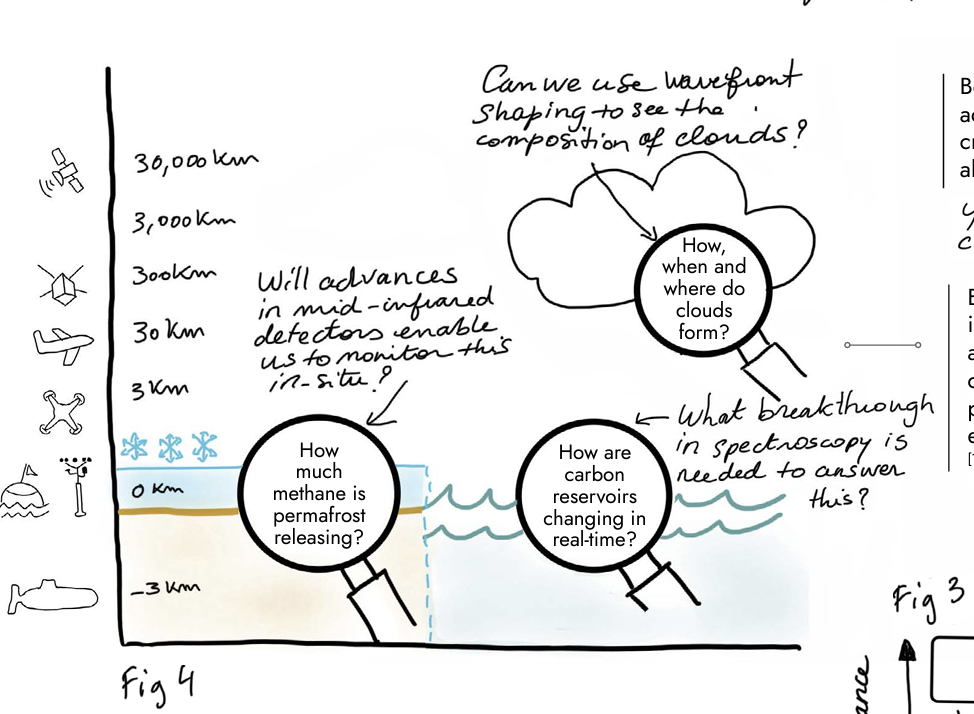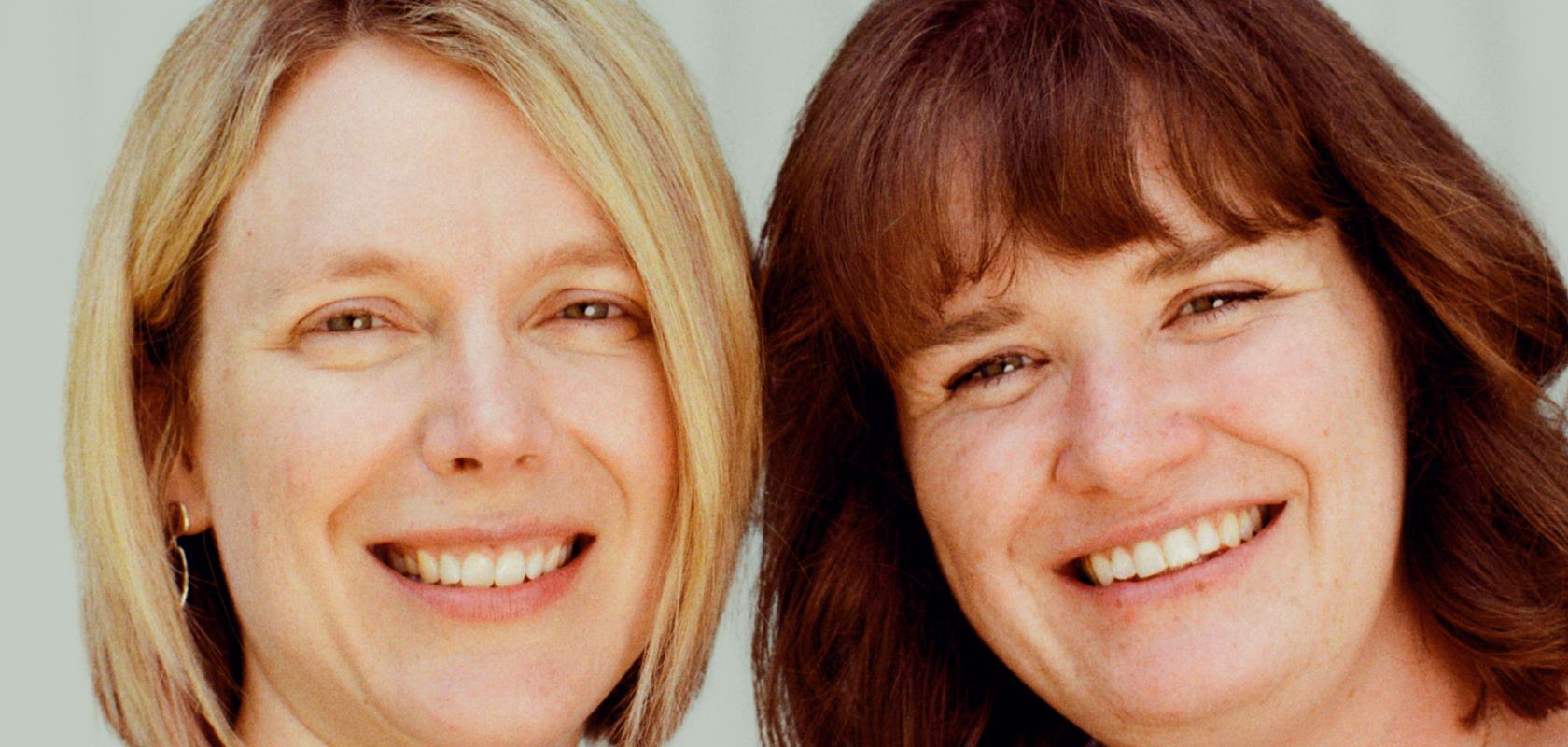Later this spring, the UK’s Advanced Research and Invention Agency (ARIA) will launch a request for proposals for Science Entrepreneurship Partners. ARIA, a new kind of R&D funding agency established by the UK Government in January 2023, will fund partners to work on designing, activating, and catalysing bespoke science entrepreneurship activities across seven ‘opportunity spaces’.
Gemma Bale, Assistant Professor of Medical Therapeutics and Head of the Neuro Optics Lab at the University of Cambridge, and Sarah Bohndiek, Professor of Biomedical Physics at the University of Cambridge, who are the programme directors (PDs) of one of those opportunity spaces – Scoping our planet: a new lens on climate science – are developing a programme thesis to address gaps in Earth system measurements that lead to uncertainties in weather forecasting and climate predictions. According to Bale and Bohndiek, it is possible to fill the existing gaps by harnessing the power of optics.
“An ARIA programme has three key characteristics. It is designed to unlock a scientific or technical capability that changes the perception of what is possible or valuable in scientific research; must have the potential to catalyse massive social and economic returns; and, critically, be unlikely to occur without ARIA’s intervention,” Bale tells Electro Optics.
“An ARIA opportunity space has the potential to yield genuinely world-changing capabilities – underexplored relative to its potential, and it is ripe for disruption by the introduction of new talent, ideas, or activity,” says Bohndiek.
“As Programme Directors (PDs), it’s our job to first define an area where we think scientific and technological breakthroughs could make a huge impact on society – but is underserved by other R&D efforts – and then develop a formal programme within it. The idea is that PDs act as a conductor to an orchestra – choosing, directing, and funding a portfolio of projects lining up to the objectives of the programme. That might include projects undertaken by start-ups, SMEs, public labs, corporates, or even individuals – whoever has the best ideas to get the job done,” Bale explains.
In 2015, the world leaders gathered at COP21 agreed to limit the rising temperature of Earth by 1.5° Celsius (34.7° Fahrenheit) by 2050. To remain on target, we must halve emissions by 2030. Meanwhile, the year 2023 was the hottest year on record.
As leaders of Scoping Our Planet, Bale and Bohndiek are exploring opportunities for optics breakthroughs in climate science and want to connect with those in climate monitoring and instrumentation, particularly those based in the UK and EU.
Bale explains how some of the most recent developments in optics and photonics are helping to answer some of the unanswered questions in climate monitoring.
“From satellites like HotSat-1 using advances in high-resolution mid-infrared cameras giving unprecedented spatial resolution for thermal imaging of the planet, to in-situ spectral sensors being used to monitor soil carbon, advanced optics are being used in a number of critical and creative ways on climate. We’re keen to see how else we can leverage what’s happening at the frontier of development by encouraging people working on optics and photonics for other applications to engage with us,” says Bale.
The promise of a space-based thermometer
HotSat-1, a British pathfinder mission built by Surrey Satellite Technology Ltd (SSTL) for Satellite Vu, flying a low-cost high-resolution mid-wave infrared (MWIR) detector, released its first images in early October 2023. The images sent by the thermal camera showed unprecedented detail on how temperatures change on Earth’s surface. Unfortunately, six months after its launch, the experimental spacecraft failed.
Despite its short life, HotSat-1 provided a detailed look at the distribution of heat on the surface of the planet. Scientists were able to visualise the thermal effects of city parking lots or the cooling influence of harbours. The camera provided insights into the behaviour of wildfires and the thermal footprint of a train on a main rail line in Chicago.
Another recent example in the orbital monitoring sphere is the MethaneSAT satellite, built by BAE Systems for the Environmental Defense Fund (EDF) and launched in March. It carries a BAE Systems-built spectrometer capable of identifying and quantifying methane emissions by measuring the narrow part of the infrared spectrum where the gas absorbs light reflected off the Earth.
Dr Alberto Conti, Vice-President and General Manager of Civil Space for BAE Systems Space and Mission Systems, said at the time of the launch: “MethaneSAT will make a critical difference in helping us better understand and remedy global greenhouse gas emissions. MethaneSAT will advance our ability to identify and track emissions from their source, empowering stakeholders and the public with actionable data to enable reductions.”
One of the questions Bale and Bohndiek ponder is if technologies emerging in other application areas, such as adaptive optics from astronomy, AI-enabled super-resolution from imagining, hyperspectral imaging from defence, or interferometry (a measurement method using the phenomenon of interface of waves – usually light, radio, or sound waves) from ophthalmology, could perhaps help to fill the climate measurement gaps.
Bale believes the optics and photonics community can play an important role by helping and perhaps influencing the way ARIA shapes its programmes.

Scoping Our Planet: "where will the next step in climate monitoring come from?
(Image: ARIA)
“ARIA has a really bold and ambitious mission. We’ve been clear from the start that we won’t get there alone, which is why engagement with the wider ecosystem is baked into our model. We shape our programmes with extensive input from the R&D community, gathered through public consultations, open solicitations, site visits, and workshops. That process helps us consider different directions, surface new ideas, and start building communities around our programmes,” says Bale.
“As scientists, this kind of engagement is really exciting, as too often research is conducted in silos. In previous roles, we’ve taken innovations and ideas from different communities, from telecommunications to remote sensing, and applied them to optics research, but we’ve been able to double down on that kind of multidisciplinary approach in developing our ARIA programme.”
For Bale, the crucial question is “where will the next step change in climate monitoring come from?”
“We are looking at Earth system measurements. [Currently, these] have major gaps, which lead to major uncertainties in both weather forecasting and climate projections. We think that by harnessing the power of optics we have the potential to fill these gaps and that could improve our ability to respond to the climate crisis,” notes Bohndiek.
Both programme directors are inviting anyone to get involved and share feedback.
“This feedback will be used to shape our programme thesis, which will ultimately underpin the funded programme,” says Bale. Ambitious, risk-taking entrepreneurs, start-ups, and capital sources are welcome to join in order to ensure ARIA’s breakthroughs lead to widespread impact. “We’ll be launching our programme thesis in the next month or so, and we expect to launch the programme later this year,” she concludes.
The optics and photonics community is invited to get involved in the process by emailing hello@aria.org.uk.


